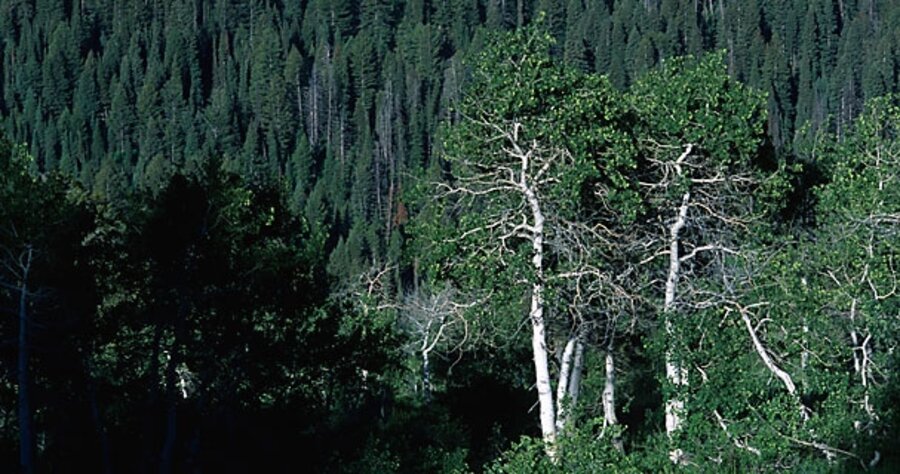EarthTalk: How threatened are US old-growth forests?
Loading...
Q: How much “old growth” forest is left in the United States, and is it all protected from logging at this point?
– John Foye, via e-mail
A: As crazy as it sounds, no one really knows how much old-growth forest is left in America, mainly because various agencies and scientists define it differently. Generally speaking, “old growth” refers to forests containing trees often hundreds, sometimes thousands, of years old. But even when there is agreement on a specific definition, differences in the methods used to inventory remaining stands of old-growth forest can produce major discrepancies – or so complains the National Commission on Science for Sustainable Forestry (NCSSF) in its recent report, “Beyond Old Growth: Older Forests in a Changing World.”
In 1991, for example, the US Forest Service and the nonprofit Wilderness Society each released its own inventory of old-growth forests in the Pacific Northwest and northern California. They both used the Forest Service’s definition of old growth based on the number, age, and density of large trees per acre, the characteristics of the forest canopy, the number of dead standing trees and fallen logs, and other criteria. Because each agency used different remote-sensing techniques to gather data, however, the Forest Service came up with 4.3 million acres of old growth and the Wilderness Society found only 2 million acres.
The NCSSF also studied the data. They concluded that 3.5 million acres (or 6 percent) of the region’s 56.8 million acres of forest qualified as old growth – that is, largely trees more than 30 inches in diameter with complex forest canopies. If the definition of old growth were broadened to include older forest with medium-diameter trees and both simple and complex canopies, NCSSF said their estimate would go up substantially.
In the Northeast, less than 1 percent of the forest is old growth, though mature forests that will become old growth in a few decades are more abundant there. The Southeast has even less acreage – a 1993 inventory found about 425 old-growth sites across the region, equaling only a half a percent of total forest area. The Southwest has only a few scattered pockets of old growth (mostly Ponderosa pine), but for the most part is not known for its old trees. Old growth is even scarcer in the Great Lakes region.
It is hard to say whether the remaining pockets of scattered old growth in areas besides the Pacific Northwest will remain protected, but environmentalists are working hard to save what they can in northern California, Oregon, and Washington State. The outgoing Bush administration recently announced plans to increase logging across Oregon’s remaining old-growth reserves by some 700 percent, in effect overturning the landmark Northwest Forest Plan of 1994 that set aside most of the region’s remaining old growth as habitat for the endangered spotted owl.
Advocates for protecting remaining old growth say it’s important for many reasons. “These areas provide some of the cleanest drinking water in the world, critical salmon and wildlife habitat, world-class recreational opportunities, and critical carbon storage in our fight against global warming,” says Jonathan Jelen of the nonprofit Oregon Wild, an activist conservation group, adding that as much as 20 percent of the emissions related to global warming can be attributed to deforestation and poor forest management. “A growing body of evidence is showing the critical role that forests – and old-growth forests in particular – can play in mitigating climate change,” he says.
Got an environmental question? Write: EarthTalk, c/o E – The Environmental Magazine, Box 5098, Westport, CT 06881. Or e-mail: earthtalk@emagazine.com.





